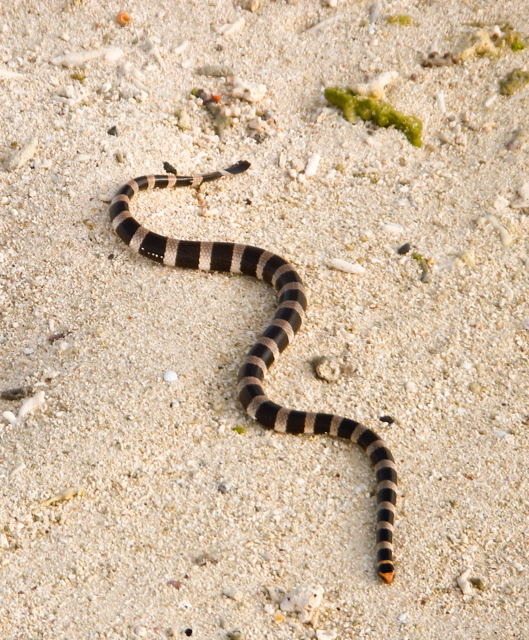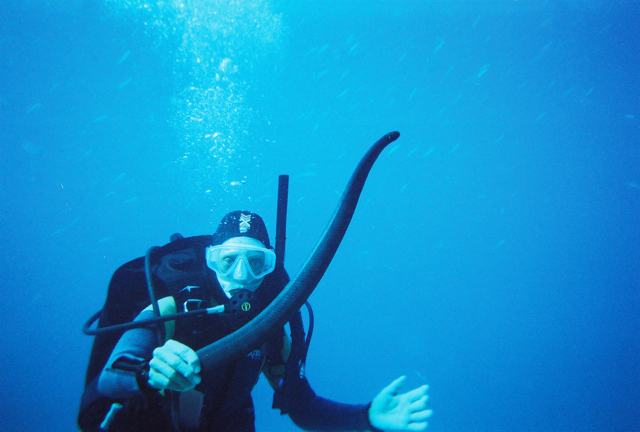Published in the Ocean Watch column, Honolulu Star-Advertiser © Susan Scott
July 14, 2006
Never touch a sea snake, I’ve said for years. They might not be aggressive to humans, but a bite could be fatal.
This week, I touched a sea snake. Worse, I held the body of a 3-foot-long sea snake as it writhed to get away. I never thought I’d do that, but there it is. And I loved every second of the experience.
I’m in New Caledonia, and once again I’ve forgotten all the misery I went through to sail here. Well, not forgotten, exactly. It’s just now I think the pain was worth it.
Not long ago I could barely find New Caledonia on a map. All I knew about this island country was that when I saw a particularly beautiful or unusual fish in a book, the caption often said it was found in New Caledonia. The reefs there, I thought, must be wonderful.
They are. An enormous barrier reef runs along the leeward side of the main island, and dozens of coral-encircled islands lie inside the lagoon. Best of all, most of these reefs are marine sanctuaries, off limits to fishing and, in some places, to anchoring. Boat moorings here are common.
So are sea snakes. In the marina where my boat is moored (I might not be the best sailor in the world, but I am queen of the marinas), sea snakes thrive. I nearly fell in the water the first time I walked down the sidewalk here and saw four sea snakes leisurely poking around the crevices of one coral-filled corner. One snake was banded, and three were a rich dark blue.
“Did you see a snake?” I asked Steve, who walked that way to drop off laundry.
“Six,” he replied.
I found a book called “Sea Snakes of New Caledonia” and since then have been reading snake facts to my crew members, both fellow divers. Sea snakes, it turns out, are common here; the country hosts 14 species.
My favorite is the yellow-lipped sea krait (another word for snake), a banded beauty half marine, half terrestrial.
This snake grows to 4 feet long and eats moray eels. The snake bites the eel once and then swallows it head first in about 10 seconds. Then the snake goes ashore to digest its meal.

In a few hours on one tiny island, I spotted five of these graceful kraits either side-winding their way along the beach or snoozing in dock crevices. These reptiles are amazingly indifferent to humans, and local people mostly ignore them.
While diving later that day, our dive master reached out and grabbed the rear quarter of a passing olive sea snake, also totally uninterested in us. The diver handed it to Scott, who then held it out to me. I couldn’t resist. The snake wiggled to swim away but didn’t even turn its head to see what was holding it up.
As we watched the creature go, it didn’t seem any more dangerous than a toy snake. In fact, only two people in New Caledonia have died from sea snake bites in recorded history.
Still, all sea snakes have cobralike venom that can kill a person quickly, and I still think it wise not to touch one.
Instead of this being my rule, however, I think I’ll make it my guideline.
 Photo Courtesty of Scott Davis, Near Fare Amadee, Noumea, New Caledonia
Photo Courtesty of Scott Davis, Near Fare Amadee, Noumea, New Caledonia